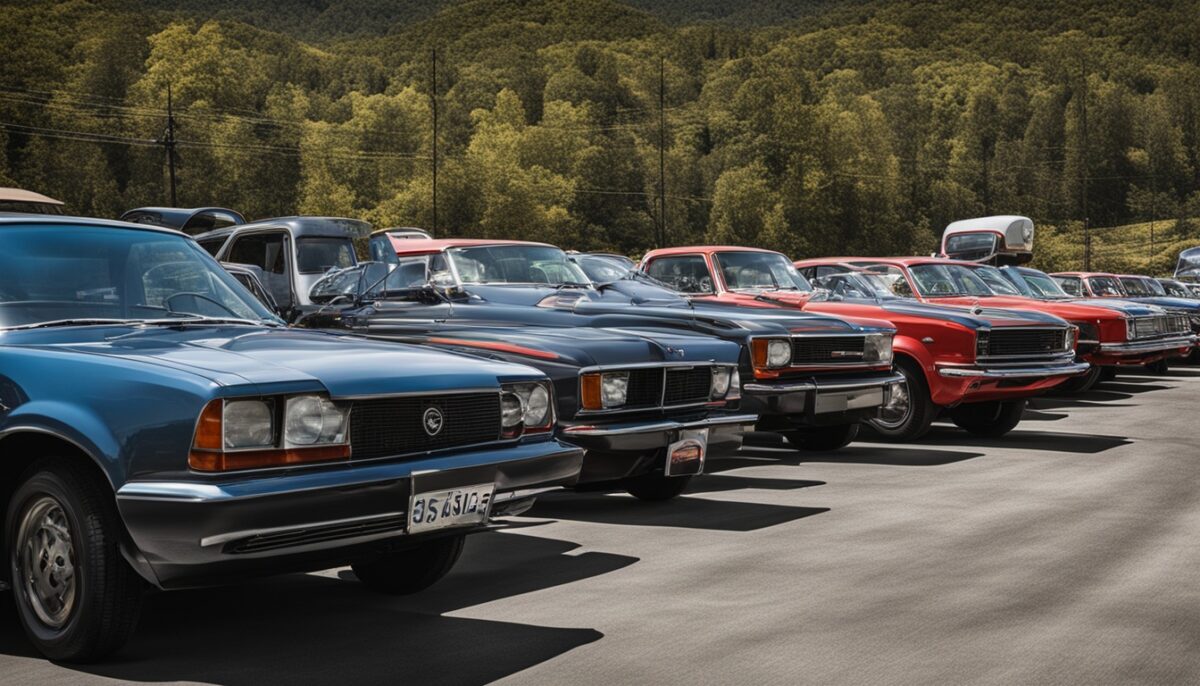In the world of car auctions, the term “stationary” holds significant meaning for both buyers and sellers. Understanding what this term signifies can greatly impact your experience and decision-making during a car auction. In this section, we will delve into the definition and implications of “stationary” in car auctions.
When it comes to car auctions, the term “stationary” refers to vehicles that are not in motion during the auction process. These vehicles may have a range of reasons for being stationary, such as mechanical issues, accident damage, or repossessions.
It is essential to have a clear understanding of the implications that stationary cars have in auctions. These vehicles often require repairs or may have hidden issues that need to be addressed. However, they also offer an opportunity for buyers to secure a vehicle at a lower price compared to fully operational cars.
When considering buying a stationary car at an auction, there are several factors to take into account. These factors include conducting thorough inspections, researching vehicle history reports, and estimating repair costs.
By gaining a comprehensive understanding of what stationary means in car auctions, you can make informed decisions and potentially find a great deal. In the next section, we will explore the definition of stationary in car auctions in more detail.
The Definition of Stationary in Car Auction
When a car is labeled as “stationary” in a car auction, it means that the vehicle isn’t running or operational. It is essentially immobile and cannot be driven. This can be due to various reasons, such as mechanical issues, engine problems, or simply being in a non-working condition. While some buyers may prefer to purchase running vehicles, others may see potential in stationary ones, considering them as viable repair projects or for salvaging valuable parts.

Understanding the definition of “stationary” in car auctions is crucial for buyers who are considering purchasing a vehicle in this condition. While a stationary car may require repairs or restoration, it can offer opportunities for those with the knowledge and expertise to bring it back to life. It’s important to thoroughly assess the condition of a stationary car, considering factors such as the cost of repairs, availability of parts, and overall feasibility of restoring it to a drivable condition.
When buying a stationary car at auction, it’s essential to approach the process with caution and gather as much information as possible. Conducting a thorough inspection, reviewing the vehicle’s history and maintenance records, and consulting with experts or mechanics can help buyers make an informed decision. Additionally, being aware of the potential risks and challenges involved in purchasing a stationary car can help buyers set realistic expectations.
Whether you’re a car enthusiast looking for a restoration project or someone seeking salvageable parts, buying a stationary car at auction can offer unique opportunities. By understanding the definition of “stationary” in the context of car auctions and considering the various factors involved, buyers can make informed decisions and find potential value in immobile vehicles.
Key Points to Consider:
- Stationary cars in car auctions are vehicles that are not running or operational.
- Reasons for cars being stationary can include mechanical issues, engine problems, or non-working condition.
- Buyers can see potential in stationary cars for repair projects or salvaging valuable parts.
- Thorough assessment and inspection are necessary before purchasing a stationary car.
- Gathering information, consulting experts, and setting realistic expectations are crucial steps in buying a stationary car at auction.
Implications of Stationary Cars in Auction
The inclusion of stationary cars in an auction can have significant implications for buyers in search of affordable vehicles or those with expertise in vehicle repairs. Stationary cars, often priced lower than their operational counterparts, can present both opportunities and challenges for prospective buyers. These cars may require additional investment and effort to get them back on the road, making it crucial to carefully evaluate their condition before placing a bid.
When considering purchasing a stationary car at auction, it is essential to understand the potential implications involved. Here are some key factors to consider:
- Cost of Repairs: Stationary cars typically require repairs to restore their functionality. A thorough assessment of the vehicle’s condition is necessary to estimate the cost of repairs accurately. This evaluation should encompass a comprehensive inspection of the car’s mechanical, electrical, and structural components.
- Expertise Required: Restoring a stationary car necessitates skills and knowledge in automobile repair. Buyers should assess their own abilities and consider whether they possess the expertise required to rehabilitate the particular make and model, or if they need to engage professional help.
- Availability of Parts: Sourcing the necessary parts for a stationary car can sometimes pose a challenge, depending on the vehicle’s age, rarity, and specific components requiring replacement. Buyers should research the market availability and cost of parts before committing to purchase.
- Time Investment: Restoring a stationary car to roadworthy condition can take considerable time and effort. Buyers should evaluate their schedule and commitments to ensure they can dedicate the necessary time to undertake the repairs or engage a professional to assist them.
It is crucial to strike a balance between the potential cost savings and the investment required to restore a stationary car. Buyers should thoroughly evaluate each vehicle’s condition, repair costs, and their own abilities before participating in an auction. By conducting due diligence and considering all relevant factors, buyers can make informed decisions when purchasing a stationary car at auction and maximize their chances of securing a profitable deal.

Factors to Consider When Buying a Stationary Car at Auction
If you’re considering purchasing a stationary car at an auction, there are several factors you should take into account. Firstly, conduct a detailed inspection to identify the extent of the vehicle’s non-functionality and potential repair costs. It’s also crucial to check if the necessary spare parts are accessible and affordable.
Additionally, consider your own skills and resources for repairing or restoring the car, as you’ll need to factor in both time and financial commitments. This is especially important if the car requires significant repairs or restoration work.
Lastly, research the market value of similar stationary cars to ensure you’re getting a fair deal. Understand the average prices for cars in stationary condition, taking into consideration the make, model, year, and any specific features or modifications.
By thoroughly evaluating these factors, you can make an informed decision when buying a stationary car at auction, ensuring you’re well-prepared to handle the challenges and potential costs associated with it.

